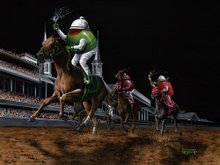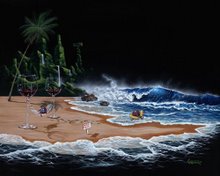Sign My Guest Book
Please scroll down to the
Bottom of the Blog page and
sign my new Guest Book.
Thanks
"Abouna"

“Just Hitting Another Brick Wall”

LESSONS IN CIVICS & THE CONSTITUTION – K Part B
The Federal Reserve: Continued

Neither Congressman McFadden nor Congressman Patman, who were both experts in banking and finance, understood the fact that the Federal Reserve Act provides for accountability of "member banks," But, by definition, in the Act itself, the Federal Reserve banks are not "member banks" and, therefore are exempt from accountability -- by contract. Actually, how many senators and representatives who signed the Federal Reserve Act in 1913, do you suppose, actually knew and understood what they were signing? Not only in respect to this particular issue, but others that have been raised from time to time?
And what about the many attempts to Audit Fort Knox? The Federal Reserve Act stipulates that gold owned by the Federal Reserve may be stored in storage facilities of the
Now, this brings up another interesting question – Is the Federal Reserve a maritime lender, or is it an insurance underwriter, to the
So, the answer is: “it is immaterial”, under Maritime Law, whether the Federal Reserve is thought of as a maritime lender, or as an insurance underwriter to the United States, since in either case the lender or underwriter, bears the risk – and the maritime laws compelling performance in paying the interest, or premium, are one and the same. Also, in either case assets can be hypothecated as security for the price of the peril.
Now lets take a look at what risk the Federal Reserve is incurring as lender or underwriter, to the
And then there was this testimony from the Federal Reserve itself: In a publication from the Federal Reserve Bank of
In his notes entitled "A Primer on Money," Congressman Patman tells that upon hearing that Federal Reserve Banks hold a large amount of cash; he went to two of its regional banks. He asked to see their bonds. He was led into vaults and shown great piles of government bonds upon which the people are taxed for interest. Mr. Patman then asked to see their cash. The bank officials seemed confused. When Mr. Patman repeated the request, they showed him some ledgers and bank checks.
Mr. Pitman warns us to remember that: "The cash, in truth, does not exist and never has existed. What we call `cash reserves' are simply bookkeeping credits entered upon the ledgers of the Federal Reserve Banks. These credits are created by the Federal Reserve Banks and then passed along through the banking system."
So here you have it, by the testimony of the Federal Reserve itself, we see: 1. it creates money out of thin air -- at no cost or risk to the Federal Reserve System -- from its right to issue credit, granted in the Federal Reserve Act. 2. It gains from the inflation it creates. 3. Money is not redeemable in its liabilities. 4. Demand deposits are liabilities of banks. 5. Federal Reserve Notes are liabilities of Federal Reserve. 6. Its gains, as issuers of credit money, is the difference between the cost of creating that credit (essentially nothing) and the initial purchasing power when the new money is put into circulation.
Next Week, August 28th, LESSONS IN CIVICS & THE CONSTITUTION – K Part C; Federal Reserve Continued















|